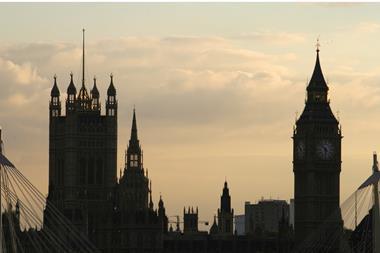Dutch pension funds now invest more in government bonds than in listed equities for the first time since pensions regulator De Nederlandsche Bank (DNB) started publishing figures on funds’ exposures.
In 2020, the aggregate value of government bond portfolios grew by almost €100bn, or 21%, to €566bn. The increase can only partly be explained by the positive returns on the asset class that were reported by pension funds.
The pension fund for workers in the care sector, the €254bn PFZW, registered a return of 7% on its government bond portfolio.
This is similar to the country’s biggest pension fund, the €493bn civil service scheme ABP. This fund makes a distinction between its returns on ‘government bonds’ and ‘long-duration government bonds’, with the former returning 4.2% and the latter 11.6%.
Though most smaller pension funds are yet to report their returns, it’s unlikely they made a significantly higher return on their government bond portfolio than the two biggest schemes. It therefore seems likely that pension funds actively increased their allocation to government bonds over the past year.
The asset class now accounts for 34% of total pension fund assets, up from 31% at the end of 2019.
Five-fold increase
The growth of government bond portfolios relative to equities’ portfolios is a long-standing trend for Dutch pension funds. When DNB started publishing allocation figures on its website in 2007, pension funds were investing almost three times as much money in equities as in government bonds.
However, since then investments in the latter have increased more than five-fold to €566bn while equity allocations merely doubled from €261bn just before the great financial crisis to €525bn at the end of 2020.
Equity portfolios grew by 8.7%, which is slightly above the 6.8% return recorded by the MSCI World Index (in euros) over the past year. ABP, PFZW and metal schemes PMT and PME all beat this benchmark, recording returns between 8.9% (PFZW) and 11.3% (PME) on their listed equity portfolios.
Returns on private equity were somewhat higher, with ABP (14.8%) and PFZW (11.6%) both recording double-digit returns. Total assets invested in private equity grew by 10% to €66bn. Total pension fund assets in the Netherlands grew by 8% to some €1.68trn.
Real estate losses
Most pension funds saw, however, negative returns on their real estate investments, the third-largest allocation for Dutch pension funds after equities and bonds. ABP reported a -10.4% return for 2020, as especially retail and office space were hit hard by the coronavirus lockdowns.
PFZW, which reports separately on listed and non-listed real estate, registered returns of -11.1% and 0.7%, respectively.
The difference in reported returns for listed and non-listed real estate returns is conspicuously large, and PFZW is not the only scheme where this seems to be the case.
The DNB figures show the total reported value of pension funds’ direct (non-listed) real estate investments increased by about 4.1% in 2020 despite the coronavirus lockdowns, even though the reported value of listed real estate investments fell by 6.7%.
This suggests pension funds have perhaps been hesitant to accept losses on the book value of their real estate investments, or found it difficult to correctly assess the current value of their properties because of a lack of transactions.


























No comments yet